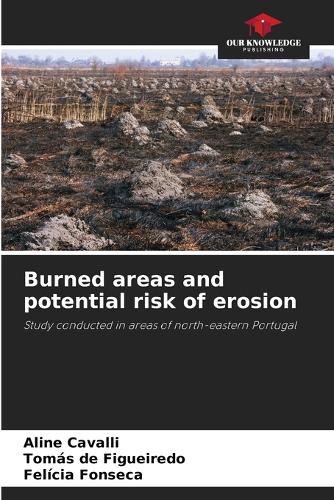Readings Newsletter
Become a Readings Member to make your shopping experience even easier.
Sign in or sign up for free!
You’re not far away from qualifying for FREE standard shipping within Australia
You’ve qualified for FREE standard shipping within Australia
The cart is loading…






Soil erosion is one of the most serious environmental problems related to land management worldwide. It is a natural process accelerated by anthropogenic activities such as deforestation and agricultural practices, among others. Among the various types of soil erosion, the most important and influential in terms of soil degradation is water erosion, particularly in north-eastern Portugal. The region comprises extensive mountainous areas that are particularly sensitive due to favourable topographical conditions and generally thin and stony soils, as well as suffering from persistent forest fires that remove the protective vegetation cover from the soil, exposing it even more to the action of rainfall. This study, focused on the District of Braganca, was based on information on the occurrence of fires available from 1990 to 2015 (ICNF) and on the Soil and Land Suitability Map of north-eastern Portugal. The study aimed to quantify the distribution of soils, land suitability and erosion conditions in areas burned in the last 26 years in the District of Braganca, using estimates of the factors of the Universal Soil Loss Equation (USLE).
$9.00 standard shipping within Australia
FREE standard shipping within Australia for orders over $100.00
Express & International shipping calculated at checkout
Soil erosion is one of the most serious environmental problems related to land management worldwide. It is a natural process accelerated by anthropogenic activities such as deforestation and agricultural practices, among others. Among the various types of soil erosion, the most important and influential in terms of soil degradation is water erosion, particularly in north-eastern Portugal. The region comprises extensive mountainous areas that are particularly sensitive due to favourable topographical conditions and generally thin and stony soils, as well as suffering from persistent forest fires that remove the protective vegetation cover from the soil, exposing it even more to the action of rainfall. This study, focused on the District of Braganca, was based on information on the occurrence of fires available from 1990 to 2015 (ICNF) and on the Soil and Land Suitability Map of north-eastern Portugal. The study aimed to quantify the distribution of soils, land suitability and erosion conditions in areas burned in the last 26 years in the District of Braganca, using estimates of the factors of the Universal Soil Loss Equation (USLE).